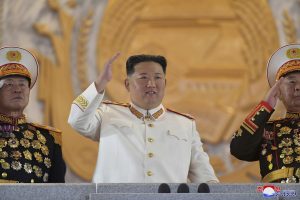Ankit Panda

In January 2021, North Korean leader Kim Jong Un told his country – and the world – about the plans he had for the evolution and modernization of his nuclear deterrent. He outlined a far-reaching, ambitious menu of military modernization goals. Among these were tactical nuclear weapons, a capability that North Korea had until then not formally sought.
The development and eventual deployment of tactical nuclear weapons by North Korea will represent the most serious negative development for peace and security on the Korean Peninsula since the country’s development of intercontinental-range ballistic missiles capable of ranging the United States. The implications include a heightened risk of nuclear escalation, greater potential for nuclear accidents and mishaps, and greater strain on the South Korea-U.S. alliance.
Tactical nuclear weapons have no universally accepted definition; indeed, the very idea of any nuclear weapons use representing a “tactical” development is contested, with analysts arguing instead that any nuclear weapon use anywhere would have “strategic” implications. Despite these debates, there are three general principles that have come to be associated with tactical nuclear weapons.
First, these weapons feature a deliberately reduced nuclear explosive yield. While some weapons considered “tactical” would still yield a significant proportion of the energy released by the nuclear weapons used by the United States against the Japanese cities of Hiroshima and Nagasaki in 1945, their yields would be relatively smaller than the significantly more damaging weapons that exist in nuclear arsenals – including that of North Korea’s – today. Until North Korea carries out a seventh nuclear test or otherwise directly reveals information concerning the explosive yields it seeks with its tactical nuclear weapons, its adversaries will be left to speculate on this matter
The second feature of tactical nuclear weapons is their deployment on relatively short-range delivery systems. In April 2022, Kim oversaw the test of a short-range missile system that flew for just about 110 kilometers; North Korean state media described that missile as a system intended to deliver “tactical nukes.” This was the first time North Korea had directly connected a tactical nuclear weapons delivery role to a tested delivery system, and it turned to be an exceptionally short-range missile. North Korea could well seek to expand the range of missile systems that might play a role in the delivery of tactical nuclear weapons, but so far, Kim has opted not to. Kim has, however, alluded to making tactical nuclear weapons lighter and physically smaller, which could allow North Korea, for the first time, to place nuclear warheads on its growing arsenal of cruise missiles.
No comments:
Post a Comment